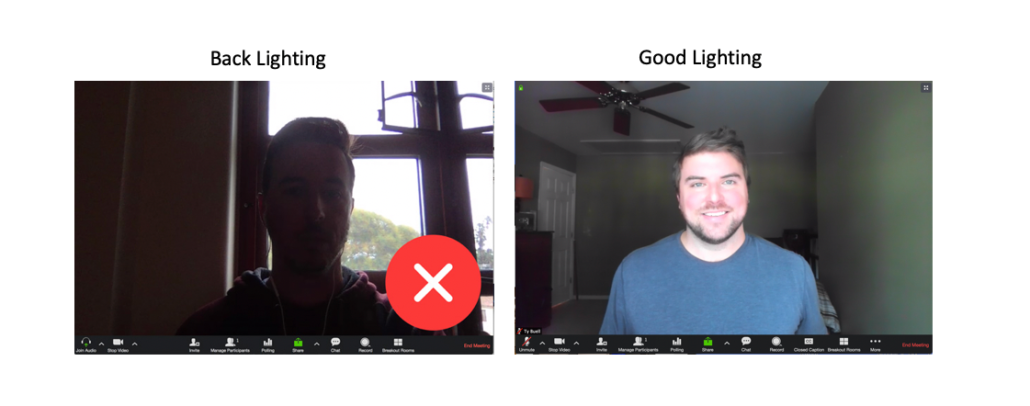How To Zoom For A Yale 1969 Online Meeting
Almost everyone in our class has “dialed in” by telephone to a “conference bridge” for a “conference call.” The voice quality is OK, and many people can attend. But it has serious limitations, as you already know.
 Especially in the wake of the “stay-at-home” orders in Spring 2020, many classmates are discovering how to use their computers, smartphones or tablet devices to join richer calls … online meetings where you can see people or presentations and talk in small groups.
Especially in the wake of the “stay-at-home” orders in Spring 2020, many classmates are discovering how to use their computers, smartphones or tablet devices to join richer calls … online meetings where you can see people or presentations and talk in small groups.
The Reunion Committee used Zoom for its planning calls, and several other Yale 1969 groups are using Zoom now, including the report from Ken Davis, the inaugural Class Council meeting in February, one of the Senior Societies and some residential-college-based groups. Others “Special Interest Groups” are in process.
As the Editor of Yale1969.org, I supported these groups as they got started Zoom, and I can tell you that, despite initial fears of dealing with a new technology, almost everyone finds that
- it’s much easier to install and use than they expected,
- it’s super-easy to “Join” a meeting, and
- the experience is much, much better than the old, telephone-only conference calls or earlier-generation video conferencing.
The rest of this post will outline how to prepare, how to join and some other information you may find useful. But let me make this offer now: If you are concerned about any technical issues, just email me at support@Yale1969.org. I’ll set up a time to collaborate with you to get you ready to use Zoom. Why? Because all of us are going to find it easier in these coming years to “meet” virtually than to meet in person; empowering every classmate to join a discussion, small or large, by video will be a huge plus for maintaining — and perhaps extending — our relationships with each other.
Joining A Meeting
When you are invited to Zoom meeting, you’ll be given alternative ways to connect. You CAN dial in using a plain old telephone, in which case you’ll be connected like you were in the old days. But the far better way is to log in using a computer, tablet or smartphone. While you can join a meeting on the fly, it’s best if you download the app and use a free account with Zoom. You can get the app for PCs or Macs here; for smartphones or tablets, go to your App Store and search for Zoom.
Once you have the Zoom app on your device, all you have to do is click on the meeting link, which will look something like this: https://zoom.us/w/510960256?tk=KZ9Bd-9gRJJiw6TnFLYJfK. That will take you directly to the meeting. (If you haven’t installed the Zoom app yet, it will allow you to add it and join the meeting in two steps.
Once You Arrive
When you mouse-over the screen, a menu will pop up from the bottom of the screen and your meeting controls are there:
- Audio. You’ll be asked if you want to connect by computer audio. Answer “yes” if your device has speakers and a mic, as most modern ones do. If not, you can call in by telephone and use the telephone to hear and speak, leaving the video channel open to see the speaker or the presentation.There’s a boom microphone icon on the left side of the menu. Clicking on it will mute or activate your mic. Initially you will be muted. You can unmute yourself by clicking on the icon. You can temporarily unmute yourself by pressing and holding the spacebar down — sort of like an old ham radio.
- Video. There is a camera icon in the left of the menu bar. Clicking on it will turn your camera on and off. Leave it on so we can see you (unless you are, um, “not decent” <smile>)
- Troubleshooting Audio or Video. If your device isn’t working, you can click on the caret symbol (^) just to the right of the boom mic icon (for audio settings) or to the right of the video camera icon (for video settings). Make adjustments there.

Speaker View of Passover Dinner during a Quarantine Gallery View or Speaker View. In the top right of the screen are the words “Gallery View” if click on that, the words will turn to “Speaker View”. Click back and forth to see the different views … either that of only the person speaking (Speaker View) or a grid showing all the people on the call (Gallery View).
Vidiquette
There are certain “best practices” and social norms that make for a better video experience:
- Audio – MUTE. We all have dealt with conference calls where one of the participants is in a noisy environment — wind noise, airport announcements, babies crying, etc. Best if you “mute your mic” to avoid that and then turn it on when you want to talk. Cool hack: press down on the space bar and hold it and that will unmute your mic until you release the space bar. Phones and pads have a similar feature by swiping left or right (depending on model).Whenever you join a Yale 1969 Zoom meeting, your mic will be set to “mute” but you can unmute when you want.
- Audio – ECHO. A related issue is “echo.” This happens when something comes out of a participant’s speakers and goes back into their mic, setting up a feedback loop. Zoom provides “echo cancellation” but sometimes network delays confuse it. An echo-loop either makes it impossible for the speaker to speak or creates a “scream” like what happens on stage when a speaker with a portable mic steps in front of a loudspeaker. Because you are muted by default, echo isn’t a problem — until you unmute. Then, if there’s echo, it’s best if you use headphone or earbuds.
- Video – LIGHTING. The main thing to keep in mind is to avoid backlighting (where there’s an open window or bright light behind you, shining into your camera). Best if the source lighting your face is behind the camera, shining on your face.When you join a Yale 1969 Zoom meeting, your camera will be defaulted to “on.” You can turn it off if you really must, but just remember that we saw you walking around Payne-Whitney butt naked at one point. Don’t get bashful now, old boy.

- Participation. This will depend on size of meetings. I’ve been in meetings with 100s … and there, it was mainly one or two speakers with everyone else on mandatory mute. One-on-one is fine … a video call. But Zoom meetings work best with 3-15 people. Everyone can see everyone. In “Gallery View” you can see if someone wants to talk or if someone is bored. It’s almost like a conference room.
- Stepping Out of the Meeting; Leaving. Sometimes you need to do something during a meeting. Best if you make sure you are mute, you step out of the frame or turn off the camera. To leave permanently, just click on “Leave Meeting” on the right side of the menu bar that runs across the bottom of the picture.


This is a great idea — both in terms of the new “platform” it allows us for exchange and the subject of this particular group. I look forward to learning more about it, especially since I have been teaching in this realm for the last fifty years — and online for the last twenty years or so. Let me know if there is a way to help.
Tim Weiskel, ’69
http://transition-studies.net
and
https://environmentaljusticetv.wordpress.com/about/